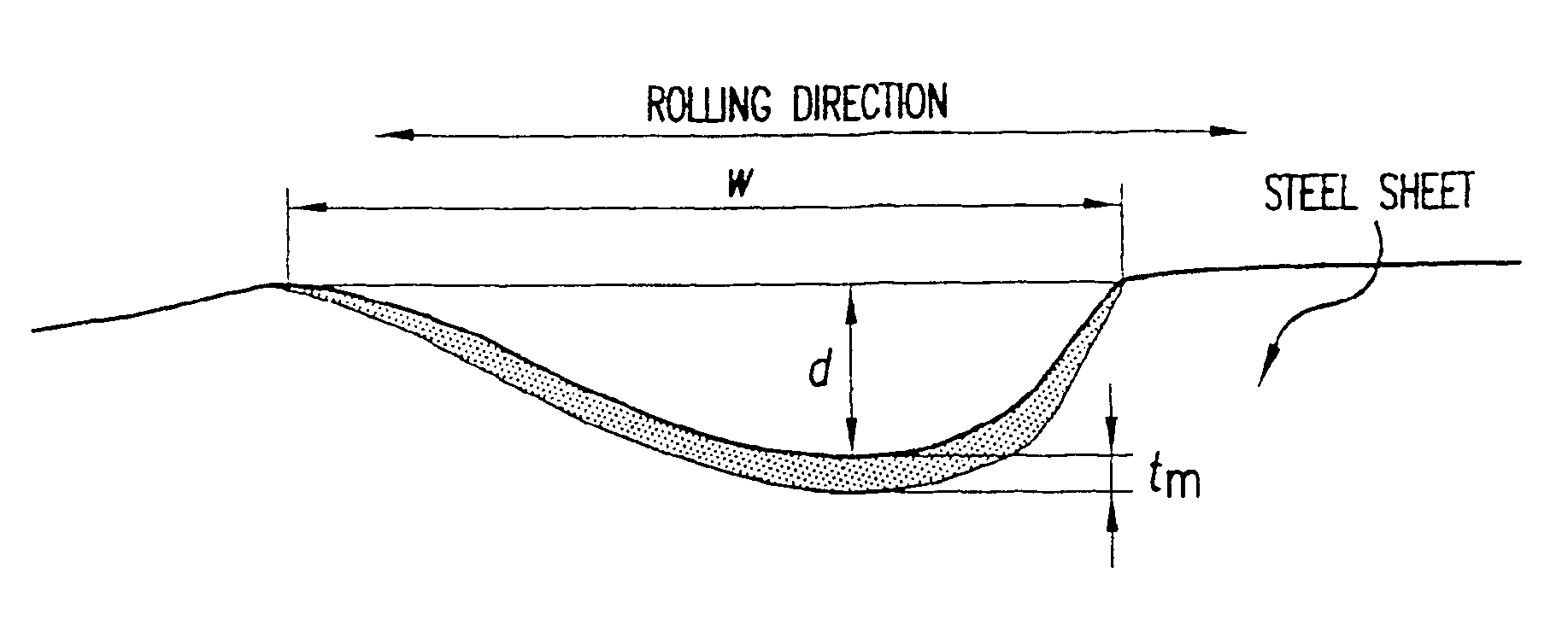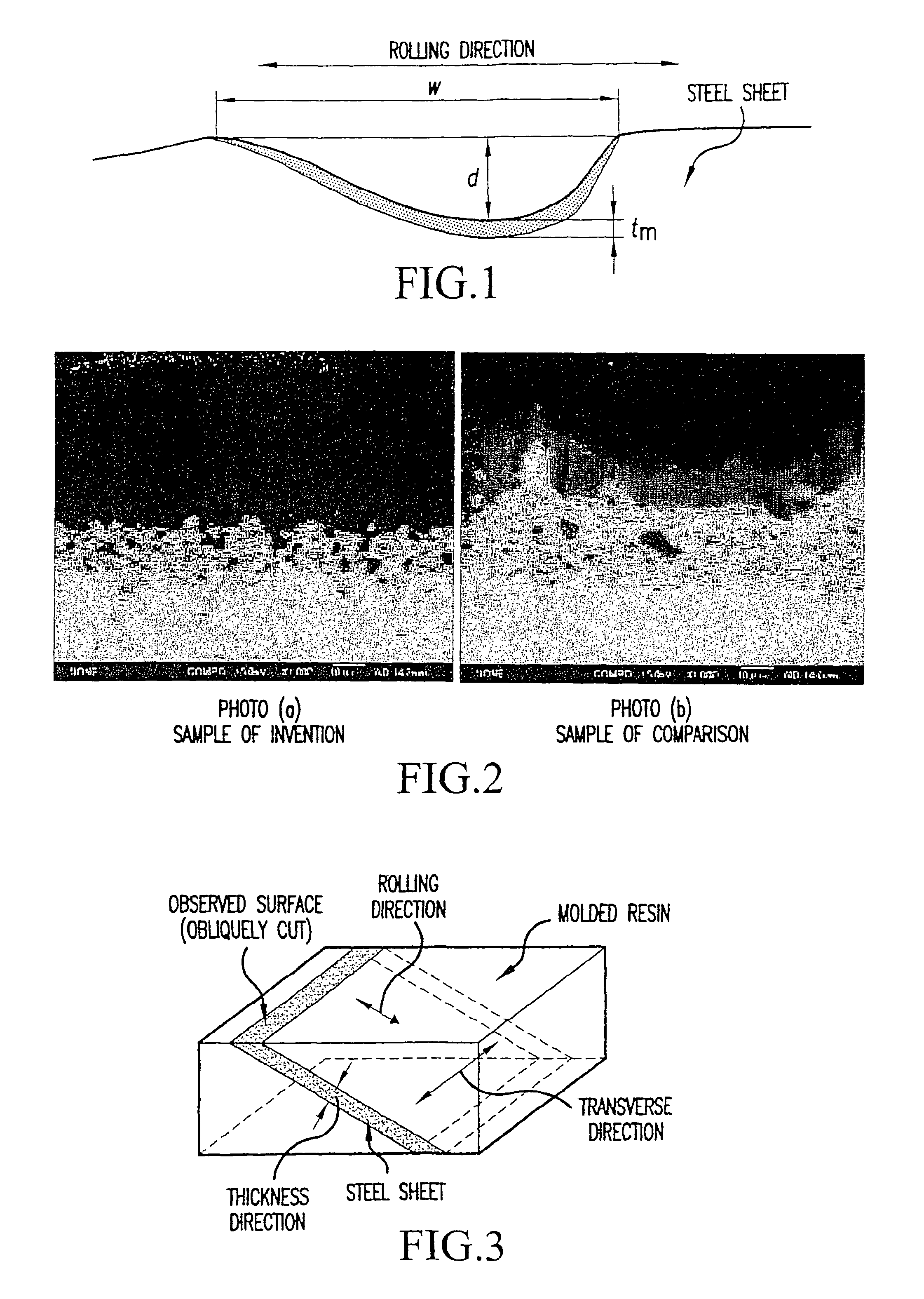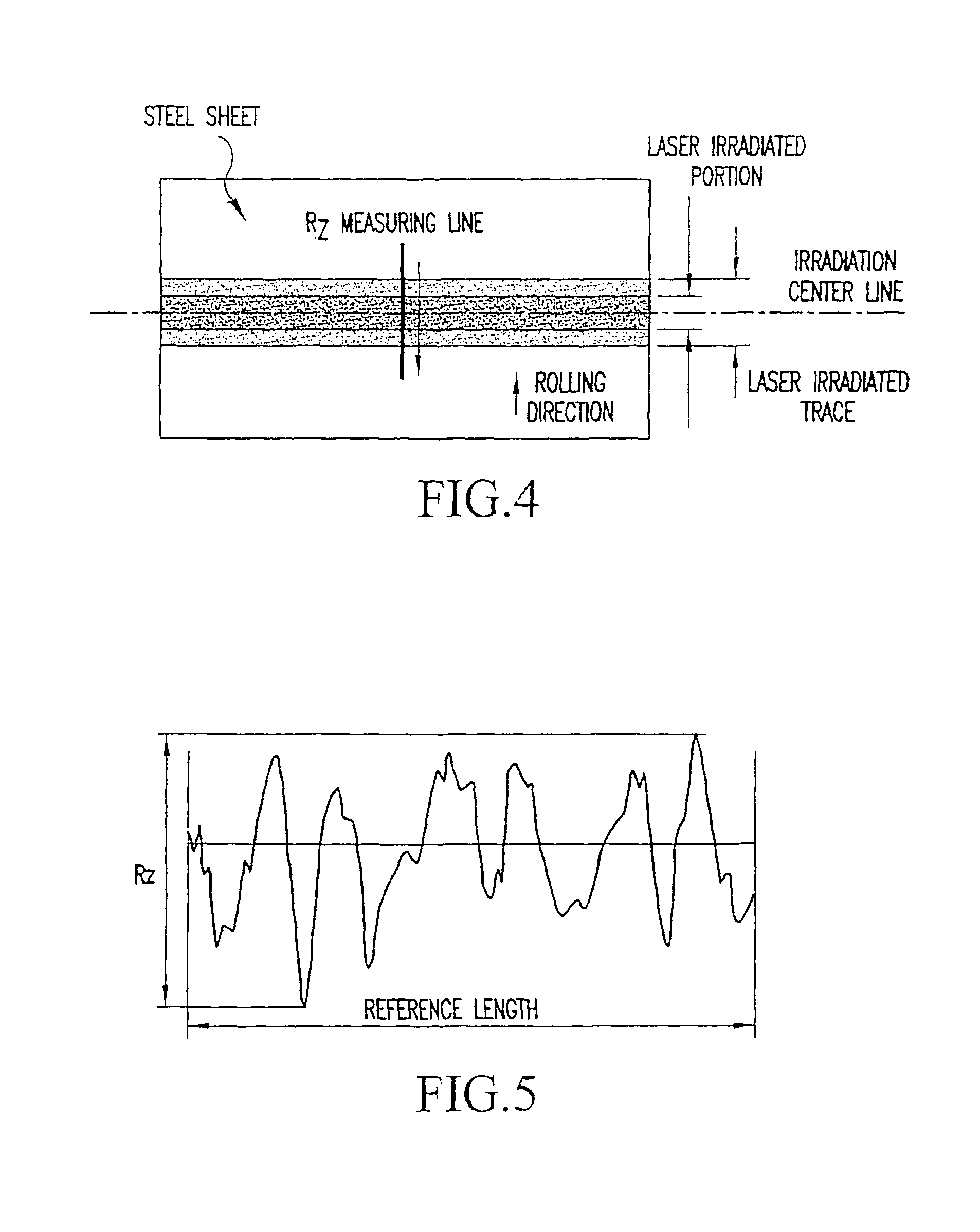Low core loss grain-oriented electrical steel sheet and method for producing the same
a grain-oriented electrical steel and low core loss technology, applied in the direction of magnetic materials, lasers, magnetic bodies, etc., can solve the problems of eddy current loss, % of core loss, limit the improvement of these metallurgical approaches, etc., to reduce both core loss and magnetostriction of grain-oriented electrical steel sheets, and excellent core loss and magnetostriction
- Summary
- Abstract
- Description
- Claims
- Application Information
AI Technical Summary
Benefits of technology
Problems solved by technology
Method used
Image
Examples
example 1
[0053]Laser irradiation is carried out in the form of a line using a fiber-laser device, having a fiber diameter of 10 μm, onto a surface of a fully-processed grain-oriented electrical steel sheet containing 3.2% of Si by mass, and a thickness of 0.23 mm, in about the transverse direction. A distance between adjoining two laser irradiation lines is 3 mm. The length of laser irradiated portion in the rolling direction is 30 μm. A thickness of solidified layer is varied by varying laser power and by varying laser scanning rate in the transverse direction. TABLE 3 shows magnetic data of each sample. The core loss, the flux density and the magnetostriction are measured while being exposed to a sinusoidal magnetic flux without applying a load stress to the steel sheet. TABLE 3 indicates the samples of (1) and (2) are superior to the comparison sample in terms of both reduced core loss and magnetostriction in a high magnetic field.
[0054]
TABLE 3thickness ofcore losssolidifiedW19 / 50magnetos...
example 2
[0055]Laser irradiation is carried out in the form of a line using a fiber-laser device, having a fiber diameter of 10 μm, onto a surface of a fully-processed grain-oriented electrical steel sheet containing 3.3% of Si by mass, and a thickness of 0.23 mm, in about the transverse direction. A distance between adjoining two laser irradiation lines is 4 mm. As the length of laser irradiated portion in the rolling direction, (1) 30 μm, (2) 80 μm and (3) 250 μm are carried out. CO2 laser irradiation is also carried out in the form of a line onto the same grain-oriented electrical steel sheet. A distance between adjoining two laser irradiation lines is 4 mm and the length of laser irradiated portion in the rolling direction is varied from (4) 300 μm and (5) 500 μm. The thickness of the solidified layer is controlled by varying laser power and irradiation time. TABLE 4 shows magnetic data of each sample. The core loss, the flux density and the magnetostriction are measured under the condit...
example 3
[0057]Laser irradiation is carried out in the form of a line using a fiber-laser device having a fiber diameter of 20 μm, onto a surface of a fully-processed grain-oriented electrical steel sheet containing 3.2% of Si by mass, and a thickness of 0.27 mm, in about the transverse direction. A distance between adjoining two laser irradiation lines is 5 mm. A length of laser irradiated portion in the rolling direction is 50 μm. The occurrence of pointed protrusions in the laser irradiated portion is varied by varying the irradiation beam scanning speed in the transverse direction. TABLE 5 shows magnetic data and the shape of laser irradiated portion of each sample. The surface roughness of the laser irradiated potion is measured by scanning in the rolling direction using a stylus (sensing pin) type surface roughness tester. The core loss, the flux density and the magnetostriction are measured while being magnetized to a sinusoidal magnetic flux without applying a load stress to the stee...
PUM
| Property | Measurement | Unit |
|---|---|---|
| thickness | aaaaa | aaaaa |
| depth | aaaaa | aaaaa |
| width | aaaaa | aaaaa |
Abstract
Description
Claims
Application Information
 Login to View More
Login to View More - R&D
- Intellectual Property
- Life Sciences
- Materials
- Tech Scout
- Unparalleled Data Quality
- Higher Quality Content
- 60% Fewer Hallucinations
Browse by: Latest US Patents, China's latest patents, Technical Efficacy Thesaurus, Application Domain, Technology Topic, Popular Technical Reports.
© 2025 PatSnap. All rights reserved.Legal|Privacy policy|Modern Slavery Act Transparency Statement|Sitemap|About US| Contact US: help@patsnap.com



